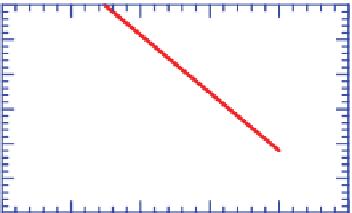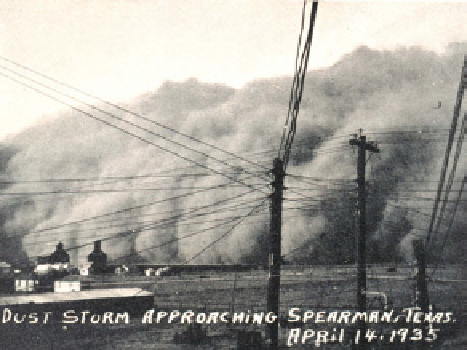Geoscience Reference
In-Depth Information
inversions are not usually associated with air pollution
buildup.
3
2.5
2
6.6.2. Horizontal Pollutant Transport
Large-scale pressure systems affect the direction and
speed of winds, which, in turn, affect pollutant trans-
port. In this subsection, large-scale winds and their
effects on pollution are examined. Small-scale winds
are discussed in Section 6.7.4.
Summer
Spring
1.5
1
Winter
0.5
0
5
10
15
20
25
30
Temperature (
o
C)
6.6.2.1. Effects of Wind Speeds on Pollutants
Winds around a surface low-pressure systems are gener-
ally faster than are those around a surface high-pressure
systems, partly because pressure gradients in a low-
pressure system are generally stronger than are those
in a high-pressure system. Strong winds tend to clear
out chemically produced pollution faster than do weak
winds, but strong winds also resuspend more soil dust
and other aerosol particles from the ground than do
weak winds. Most soil dust resuspension occurs when
the soil is bare, as illustrated in Figure 6.17.
Figure 6.16.
Schematic showing seasonal variation of
afternoon inversions in Los Angeles.
6.6.1.6. Marine Inversion
Amarine inversion occurs over coastal areas. Dur-
ing the day, sunlight heats land faster than it heats
water. The rising air over land decreases near-surface air
pressure, creating a sea-land pressure gradient that
draws air inland from the sea. The resulting breeze
between sea and land is the
sea breeze
.Ascool, marine
air moves inland during a sea breeze, it forces warm,
inland air to rise, creating warm air over cold air and
a
marine inversion
,which contributes to the inversion
strength dominated by the large-scale subsidence inver-
sion in Los Angeles.
6.6.2.2. Effects of Wind Direction on Pollutants
Large-scale pressure systems redirect air pollution.
When a surface low-pressure center in the Northern
Hemisphere is located to the west of a location, it pro-
duces southerly to southwesterly winds at the location,
as seen in Figure 6.4a. Similarly, surface high-pressure
centers located to the west of a location produces north-
westerly to northerly winds at the location, as seen in
6.6.1.7. Small-Scale Subsidence Inversion
As air flows down a mountain slope, it compresses and
warms adiabatically, just as in a large-scale subsidence
inversion. When the air compresses and warms on top
of cool air, a
small-scale subsidence inversion
forms.
In Los Angeles, air sometimes flows from east to west
overthe San Bernardino Mountains and into the Los
Angeles Basin. Such air compresses and warms as it
descends the mountain onto cool marine air below it,
creating an inversion.
6.6.1.8. Frontal Inversion
A
cold front
is the leading edge of a cold
air mass
and the boundary between a cold air mass and a warm
air mass. An air mass is a large body of air with
similar temperature and moisture characteristics. Cold
fronts and warm fronts form around low-pressure cen-
ters, particularly in the cyclones that predominate at
60
◦
N. Cold fronts rotate counterclockwise around a
surface cyclone. At a cold front, cold, dense air acts
as a wedge and forces air in the warm air mass to rise,
creating warm air over cold air and a
frontal inversion
.
Because frontal inversions occur in low-pressure sys-
tems, where air generally rises and clouds form, frontal
Figure 6.17.
Dust storm approaching Spearman,
Texas, on April 14, 1935.
Mon. Wea. Rev
.,
63
, 148,
1935, available from the National Oceanic and
Atmospheric Administration Central Library;
www.photolib.noaa.gov.











Search WWH ::

Custom Search